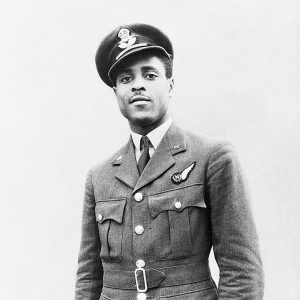A Time To Remember – 11 November
In November every year, there are various events to help us remember all of the people who have served their country or died during wars. Here’s our guide to what Remembrance is all about, and why it inspired one First News reader to look into the life of a little-known war hero.
Where it all began
The idea of stopping to remember those who had died during wartime began after the First World War, which was one of the deadliest wars in history and led to the deaths of millions of soldiers and civilians. The peace agreement that was reached at the end of the war was known as an armistice, which is a Latin term that means to hold still arms (as in weapons). The peace deal started at 11 am on 11 November 1918, so now every year we celebrate Armistice Day on 11 November, with a two-minute silence at 11 am. Remembrance Sunday is always the nearest Sunday to Armistice Day and is a day when everyone can stop to remember all those who have sacrificed their lives.
Why do people wear poppies?
Poppies are sold to raise money for servicemen and women, and their families, whose lives have been affected by war. They are a symbol of remembrance and hope, as they were the only flowers to grow on the battlefields after the First World War. Canadian Officer John McCrae wrote about them in his famous war poem ‘In Flanders Fields’ back in 1915. He wrote: “In Flanders fields, the poppies blow, between the crosses, row on row”. The Poppy Appeal is run by the Royal British Legion.
An inspiring tale
First News reader Sarah Mirkin won a national competition when she was just seven years old by writing about a man from Sierra Leone in Africa, who signed up to help defeat the Nazis in World War Two. John Henry Smythe was a member of the Krio community in Sierra Leone, a small country in West Africa. The Krios are descended from slaves who were freed when slavery was abolished, so they have an interesting history. “I am a Krio and I pondered on how more people could know about my heritage,” Sarah told us. “I decided to write a story about a courageous, clever and kind Krio called John Henry Smythe.”
“Writing about my history makes me feel proud of who I am. Also, there is a Krio saying: ‘If you don’t know where you are going, at least know where you came from.’ John Henry Smythe was a navigation officer in the RAF in World War Two. He flew on 27 missions, although most crews only did 12. On his 27th mission his plane was shot down and he was taken to a prisoner of war camp. I think his courage helped him to survive 18 months there and his kindness made him forgive the German who shot him down. After the war, he was so clever that he was made the boss of all the lawyers in Sierra Leone.”
An amazing life
John Henry Smythe was one of the first black men to join the RAF and was chosen to train as a navigator due to his maths ability. Flying in missions over Europe was incredibly dangerous and many crews only flew a few missions before being shot down or killed. But John had luck on his side until his 27th mission when he was hit twice and had to parachute to safety.
Although the Nazi leaders were incredibly racist, John said that he was generally treated very well by the German soldiers at the prisoner of war camp where he spent 18 months. After the war, he was one of the top officials on the famous Empire Windrush ship, which brought lots of men and women from the Caribbean to help rebuild Britain. Later, he went to court to defend an accused man and won the case, even though he had no legal training, which eventually led to a successful law career.

You can read more about John’s amazing life and watch his son Eddy talk about him here.
Sarah’s story about him features in Bedtime Stories: Beautiful Black Tales From The Past.

0 Comments